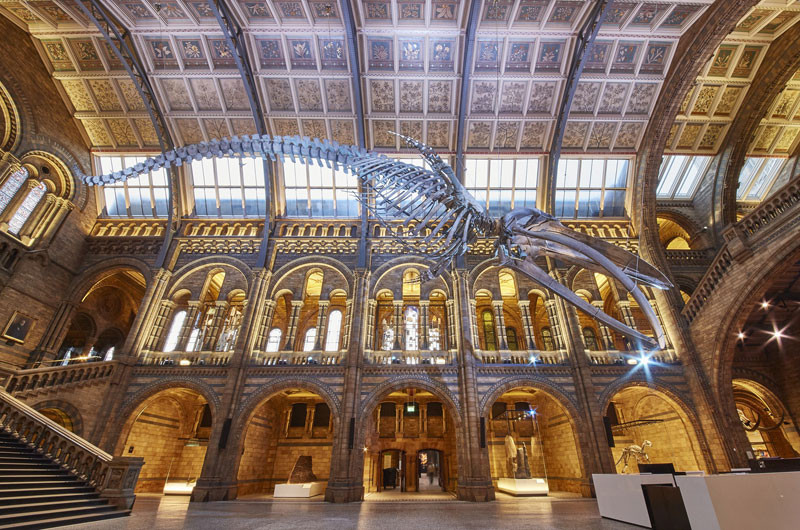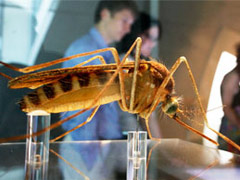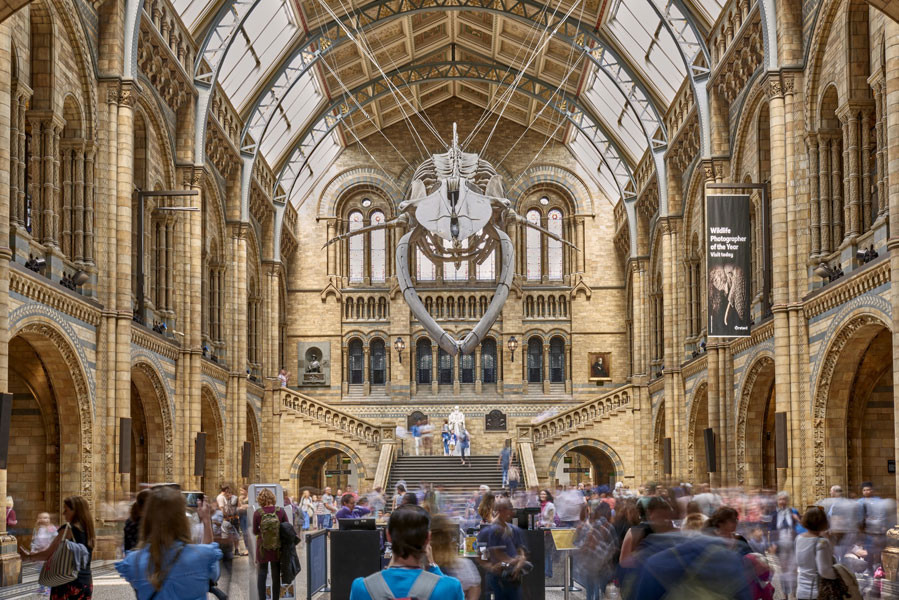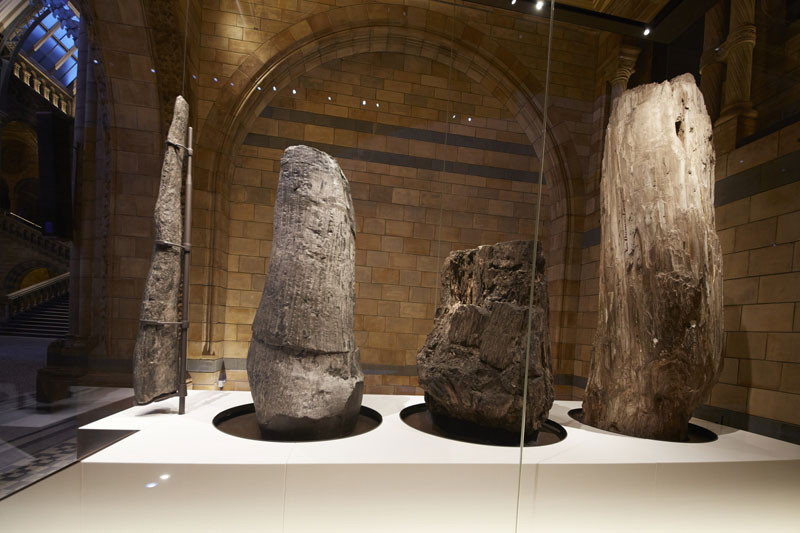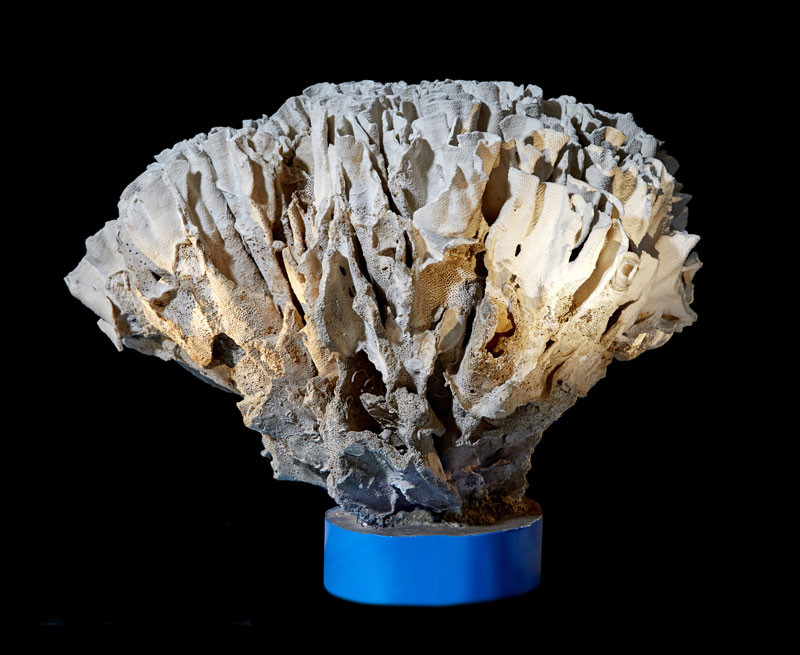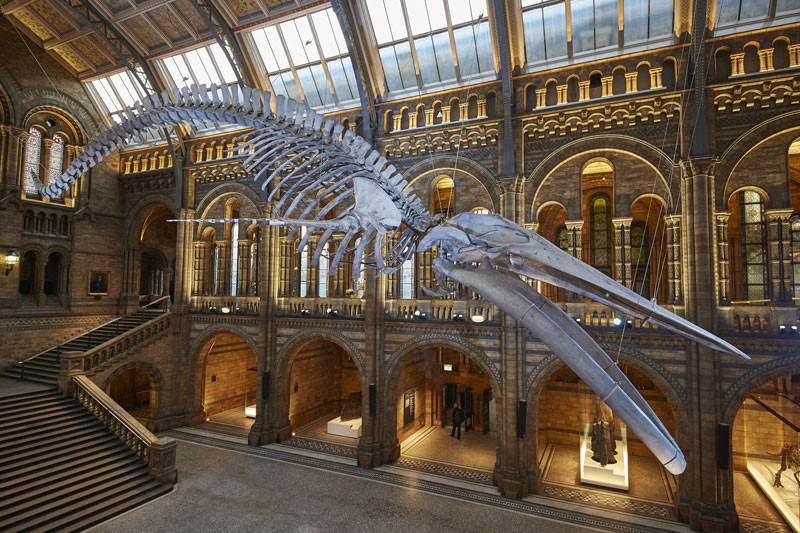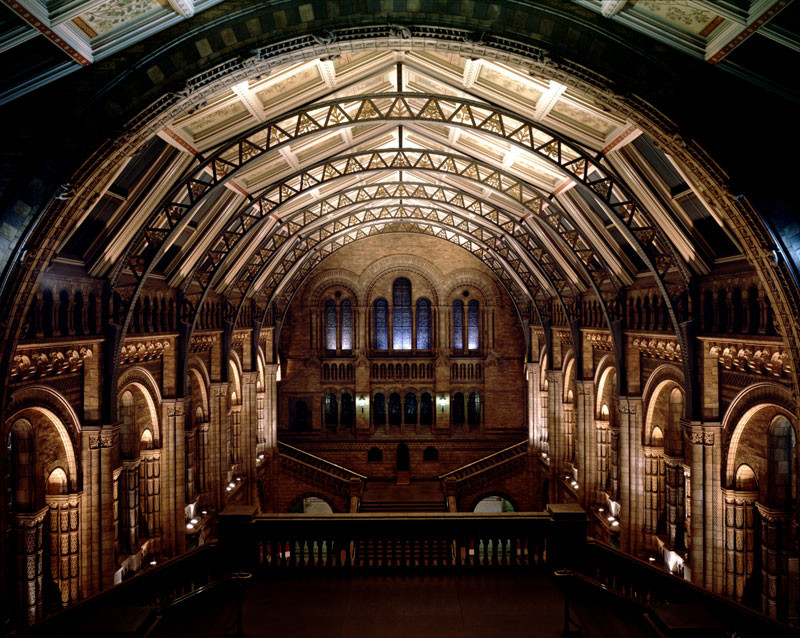The Natural History Museum collection dates from the middle of the eighteenth century, and was originally housed in Bloomsbury. The collection was started by premier London Physician Dr. Hans Sloane. Sloane’s collection included animal and human skeletons, snake skins, and a huge variety of plants and artefacts from across the globe. Dr. Sloane’s will asked for the collection not to become separated and stipulated that the collection should reside in London where it would be seen by the maximum concentration of people. The Crown bought his collection and over the next one hundred years explorers, doctors and physicians added to the collection, including a treasure of herbs collected by Joseph Banks during his travels with Captain Cook aboard the ‘Endeavour’.
In 1856 Professor Richard Owen, the country’s most acclaimed palaeontologist, took charge of the collection and successfully campaigned to have the growing collection moved to larger premises. Parliament bought land in South Kensington soon after to build the proposed museum. In 1864 a competition was held to design the new museum, using Owens’s propositions as a guideline. The winning design came from Captain Francis Fowke, the designer of the Exhibition Centre. Fowke then died suddenly and Alfred Waterhouse was elected to continue his plans. After seven years the building was completed in 1880.
The Museum is a spectacular Victorian-style Italian Renaissance building described as a 'Cathedral of Science', and was the combined vision of three extraordinary men. The exterior of the building is adorned with stone animals and plants, symbolizing the significance of the interior exhibits. The Natural History Museum is now one of the most visited museums in the country and contains an unrivalled collection of exhibits. A 25-metre blue whale skeleton, the largest mammal in the world, suspended in the air, is the main exhibit in the impressive Hinze Hall, and is the gateway to the museum. Other exhibits include dinosaurs, human biology, ecology, British natural history, discovering mammals, reptiles and fish, marine invertebrates and creepy Crawlies. Admission to the Natural History Museum is free, although donations are welcome.
All Images: Trustees of the Natural History Museum

